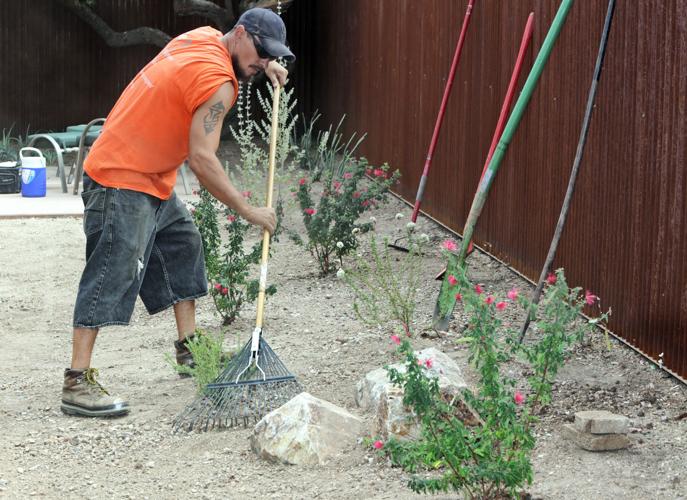OK, by a show of hands: How many of you gardeners own a rotary hammer? A caliche bar? How about welder’s gloves?
First-time desert gardeners will quickly learn that the contents of one’s garden shed will look a bit different from those in other parts of the country.
Professional landscapers Eli Nielsen and Greg Corman will lead a Tohono Chul Park class Saturday, Dec. 9, that will show what tools you really need to garden successfully in Tucson.
FOR DIGGING
One important tool is a caliche bar. It’s a 30-pound, 6-foot rod with a chisel at one end. When thrust hard enough, it can break up cement-strong calcium carbonate called caliche that’s found in the ground.
“Most are horrified when they find out that they have to use one,” says Corman, owner of Garden Insights Inc.
Pick axes, jackhammers and tough shovels seem to speak more about mining than gardening. Yet they’re necessary to start growing plants, says Nielsen, owner of EcoSense Sustainable Landscapes Inc.
“Our soils are just harder and have less nutrient content and tend to have pockets of caliche,” he says. Dry, rocky soil makes the job of planting even harder.
Nielsen said he doesn’t think people need a sidewalk-busting jackhammer, but a rotary hammer will come in handy. It can break up and drill holes right through caliche, he says, that will allow water drainage.
He also says not to bother buying a garden shovel that’s about 3 feet long. They don’t provide the leverage you need to get into the dirt and under rocks.
Instead, invest in a spade shovel with a long, fiberglass handle.
He also suggests getting a couple of trenching shovels of different spade sizes. They create more holes and reduce the amount of digging you need to do.
Corman, who also is a metal and wood sculptor, devised his own hydro-excavator, which he will share at the class.
Essentially, he’s put together a garden hose attachment made of galvanized steel that shoots pressurized water. The water digs out a hole where it is aimed. As an added benefit, it also moistens the soil where the plant will be placed. The downside is that wet dirt gets sprayed around.
“But it’s way better than working with a pickax,” he says. “That’s a way dirty job and hard on your back.”
FOR PRUNING
Corman also created a saw that can protect you while pruning prickly plants such as agaves.
He attached a pruning saw replacement blade to a 36-inch-long ax handle. It keeps him farther away from spines and thorns than when using a handsaw.
Nielsen advises gardeners to ditch anvil pruners, which has one blade that ends its cut on a stationary surface. Instead, use bypass pruners, which work more like scissors, for cleaner cuts.
One thing gardeners don’t need is a chainsaw. “Well-intentioned homeowners cause irreparable damage to their nice trees,” Nielsen observes.
If pruning requires heavy equipment, call a professional instead.
THIS AND THAT
Get several pairs of gloves, Nielsen advises. Welder’s gloves provide the best protection against spiny and thorny plants, but they affect your dexterity.
He likes gloves with latex-coated palms for a better grip, especially for gardeners who have weak hands. Leather gloves provide the best dexterity.
Don’t buy a wheelbarrow, Corman advises. Most people don’t have the upper-body strength to use them. Instead, buy a garden cart or hand truck. Either should have good-quality steel wheels.
Invest in a good set of tools with metal, not wooden handles. They can last you a lifetime.
Look for hose nozzles and other attachments with metal fittings. Plastic won’t last.
Get a sunshade hat that covers all of your head and protects your face and nape.
Avoid rototillers and cultivators, which don’t work well on hard virgin or lightly amended desert soil.







